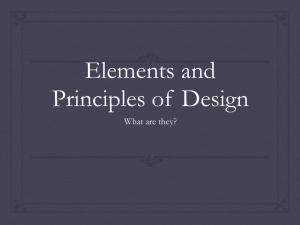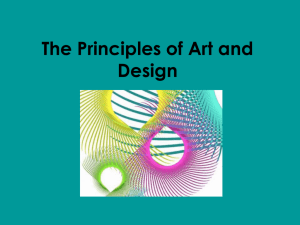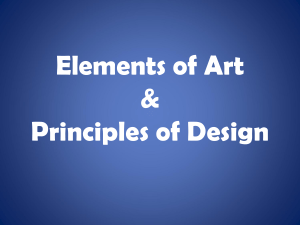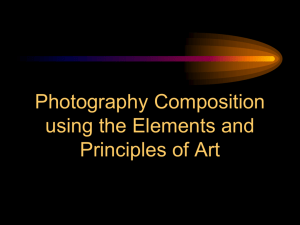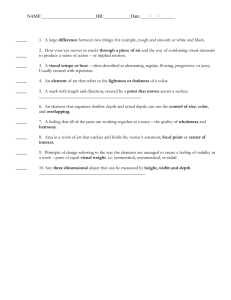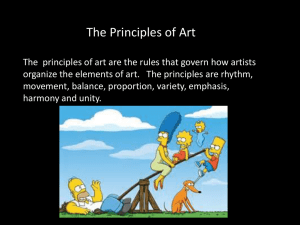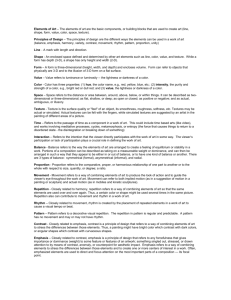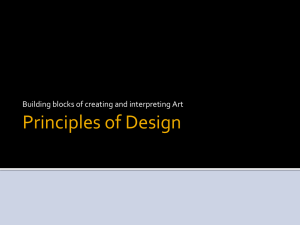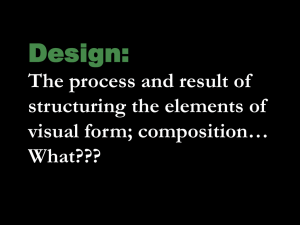2D Terms
advertisement
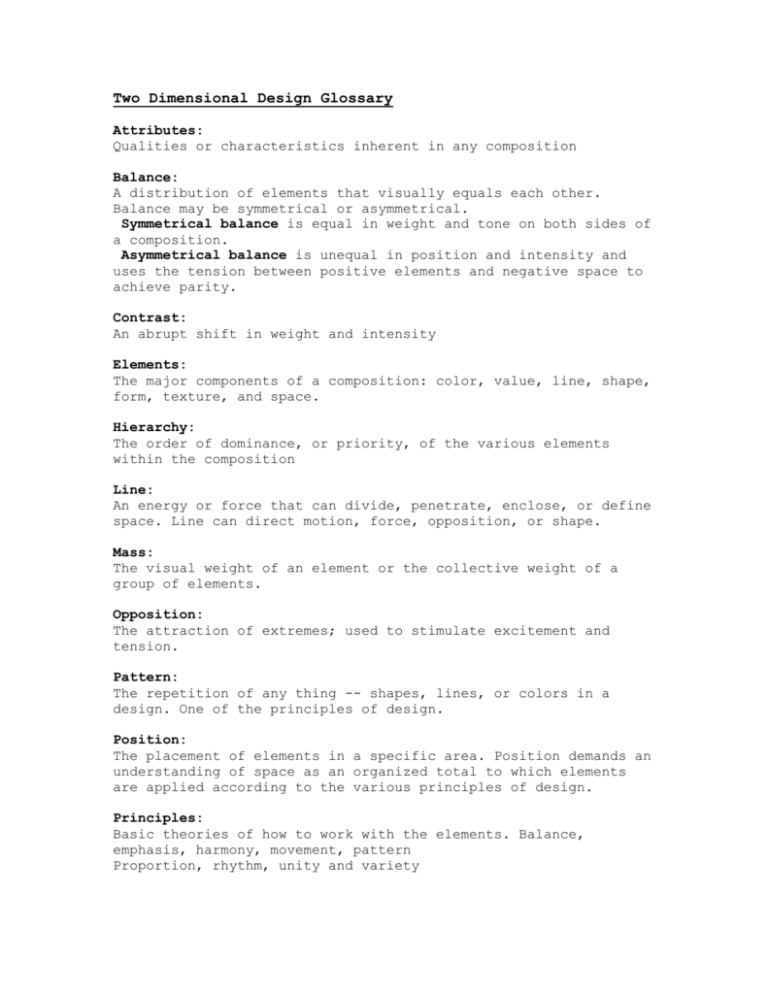
Two Dimensional Design Glossary Attributes: Qualities or characteristics inherent in any composition Balance: A distribution of elements that visually equals each other. Balance may be symmetrical or asymmetrical. Symmetrical balance is equal in weight and tone on both sides of a composition. Asymmetrical balance is unequal in position and intensity and uses the tension between positive elements and negative space to achieve parity. Contrast: An abrupt shift in weight and intensity Elements: The major components of a composition: color, value, line, shape, form, texture, and space. Hierarchy: The order of dominance, or priority, of the various elements within the composition Line: An energy or force that can divide, penetrate, enclose, or define space. Line can direct motion, force, opposition, or shape. Mass: The visual weight of an element or the collective weight of a group of elements. Opposition: The attraction of extremes; used to stimulate excitement and tension. Pattern: The repetition of any thing -- shapes, lines, or colors in a design. One of the principles of design. Position: The placement of elements in a specific area. Position demands an understanding of space as an organized total to which elements are applied according to the various principles of design. Principles: Basic theories of how to work with the elements. Balance, emphasis, harmony, movement, pattern Proportion, rhythm, unity and variety Relationship: The connecting force between elements (harmony and proportion) Repetition: The recurring use of the same element or theme. Rhythm: The moving force, or flow, which connects elements within a composition. Solid: An unbroken area having a definite shape. Space: The area in which all elements act. Tone; Shades of gray. Texture: Interwoven patterns of light and dark tones. Value: An element of art that refers to the lightness or darkness of a color. Value is an especially important element in works of art when color is absent.
